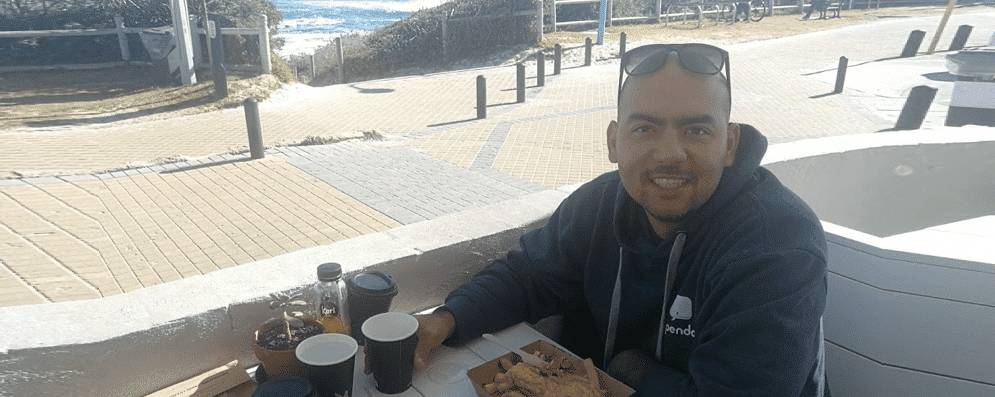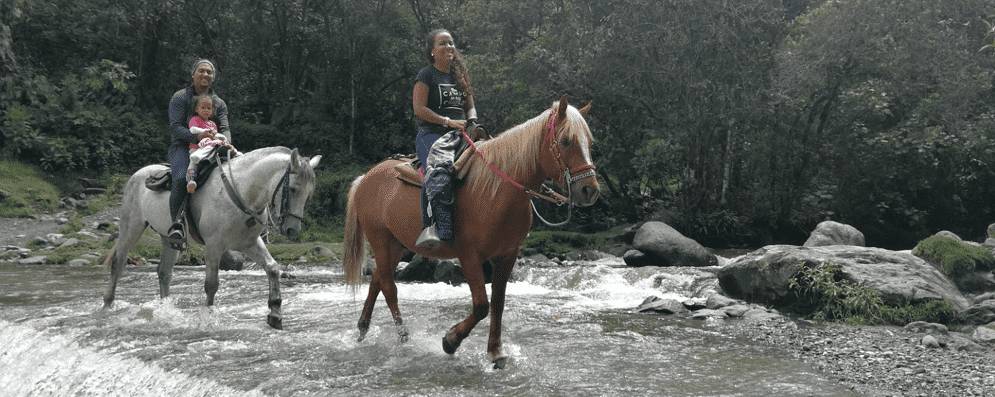Subscribe to our blog
A chat with our Web Technical Lead on SME software
Published: September, 11th 2020

There is a lot that can potentially go wrong when it comes to the technical aspects of planning and developing elite software that can handle specific processes, data and tasks for businesses across Australia.
It’s the opportunity to overcome these challenges (along with Perth’s beautiful beaches and weather) that saw our Web Technical Lead, Jhoan “JB” Beron, leave his native Colombia to become one of our most talented and knowledgeable team members.
JB’s brilliant insight into our technology, frameworks, tools and prototypes for our software (and his infectious personality) is why we’re lucky to have him as a member of our growing team.
What is your role and what does it entail?
“I’m the Web Technical Lead. I work across the front-end side of our products and I’m heavily involved in what our customers actually interact with. About 80% of my time is spent coding, implementing new features for our suite of products, improving existing functionality and ensuring our team collaborates on creating the best UI design to please our customers.
The remainder of my time is spent coordinating with our back-end team to approach daily challenges in the most effective way. This mainly involves clarifying requirements with our Business Analysts while mentoring and collaborating with other developers in our growing team.
Web development is very dynamic, so every day I’m learning about new technologies, frameworks and tools, making small prototypes, and assessing what can be integrated into our products. Our roles are important because we build the face of our products. My main goal is ensuring we provide a great experience for our customers while helping them embrace a faster and easier digital efficiency for their daily operations.”
What did you study before your current role and where?
“I completed my Bachelor’s Degree in Computer Science from the Pontificia Universidad Javeriana (Pontifical Xavierian University) in Colombia in 2008. Most of my experience since then has been in software development in the retail and B2B industry.
I had a three-year break from development when I explored working as a consultant and instructor which I really enjoyed, but nothing compares to building and growing products.
I came to Australia for the first time 10 years ago. The goal back then was to study and improve my English. I chose Perth and quickly fell in love with the city along with its weather and beaches. After getting my permanent residency, I worked in the public sector for the Shire of Mundaring for a year and in 2015 I was given the opportunity to join Spenda where I started as a developer. I’ve since had five years to soak in as much knowledge as I can from a great team of people and look forward to many more.”

What kind of software is your team currently working on?
“We are actively working on our Spenda platform at the moment. SpendaCollect was our last product released, a digital tool to help businesses manage debt collection and payments quicker and easier. It allows a business to send invoices quickly and securely to their customers who in turn can view, track and batch-pay all outstanding invoices at once with real-time financial integration and automated reconciliations. We’re very excited about it and how it can help Australian businesses battle late and inaccurate payments.
We’re currently adding more new features to our products and functionalities and there are numerous ideas ahead in our roadmap. I’m looking forward to working on these ideas with the team as they’re all remarkably talented and just as keen as I am to explore modernised web technologies. It’s very exciting to work with people who are just as passionate as I am, I’m very fortunate.”
How long does the process usually take to get a software idea into a completed product?
“The implementation time varies between specific features, but generally, the development process follows the same steps as cooking your favourite dish. Dave Wood, our Chief Product Officer, defines what he wants to eat (feature idea) then our Business Analysts create a recipe with step-by-step instructions (requirements and rules) on how to cook that particular dish before our designers provide us with a visual guide of how to best serve it to the diner (sketch files, UI design).
With the recipe and the visual guide, we start by making sure our pantry is stocked with the ingredients we need and then we start the peeling, slicing, mixing, stirring, and marinating. The key here is to keep our customers (PO, BA, and designers) involved in each step of the cooking process and provide them with small samples (internal demos) along the way so they can provide feedback. We don’t want to serve our customers with a different order from what they’re expecting.
Cooking analogy aside, we aim to demo an initial prototype of the feature after two weeks of work and then iterate over it based on the feedback received. This ensures we give our customers the best product possible.”
What was one of the biggest problems you’ve personally encountered in software development and how did you and your team overcome it?
“Every stage has come with its own challenges. At the beginning of my career, I remember programming being very challenging and frustrating to sail through without minor issues surfacing. After a while, I soaked in the techniques and tactics our dynamic team used to overcome hurdles and programming became easier as my level of experience increased.
The best feedback I’ve gathered is that if you are starting on software development, be patient and kind to yourself and take things one step at a time. Keeping up with a very fast developing industry and knowing what to focus on with so many options available can be overwhelming, but the fundamentals should never change. Making something functional that solves a problem quickly and easily is always a better option than something beautiful but unusable.”

What do you consider to be the most important aspects of software development for our customers?
“Definitely providing value to our customers is what I consider to be the most important aspect. Either by solving a problem for them, by helping them save time and money or by simply educating them on digital processes that can improve their business.
There has been a huge digital shift from businesses seeking digital tools or wanting to sell online to overcome the challenges of COVID-19 and our number one priority is helping businesses not only discover this technology and the benefits available but making this transition from their traditional methods to our software as seamless as possible and providing assistance wherever we can.”
What has been your biggest accomplishment personally?
“I feel I have made a few right decisions in my life and I feel very fortunate for being where I am today. Being born and raised in the beautiful country of Colombia also meant opportunities were scarce when I was growing up. Getting an education provided me with adequate tools to build a better future and open a lot of doors.
Having the courage to move my family across the Pacific Ocean to Australia has meant my daughter and any future children can have a better quality of life and the same opportunities that I had. That’s been my greatest accomplishment. If my wife is reading this, I’m hoping for two more kids!”
What are some of your favourite hobbies and interests outside of Spenda?
I’m from a Latino background, so for us Colombians family is paramount. A lot of my free leisure time involves spending quality time with my wife Diana and five-year-old daughter, Gabriela. I’m also a salsa-dancing advocate and enjoy watching as much sport as possible except for cricket. Sorry to all the Aussies out there, but I don’t get it!
I also host a podcast for the Latin American community in Australia on chibchan.co where I interview Latino immigrants and share their experiences, learnings, and stories of migration. There are some incredible tales out there and I thoroughly enjoy letting them express their journey to Australia as it resonates with my own life experiences.”

